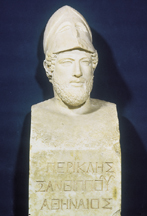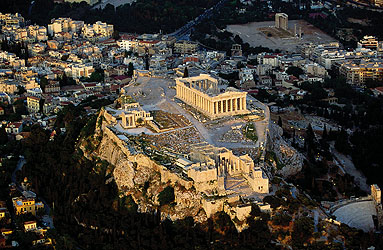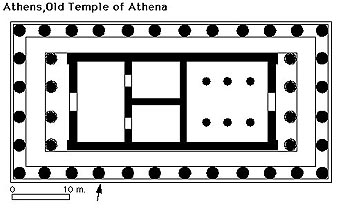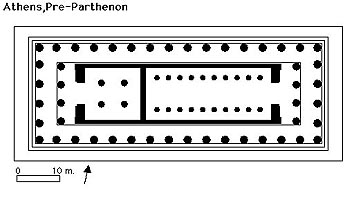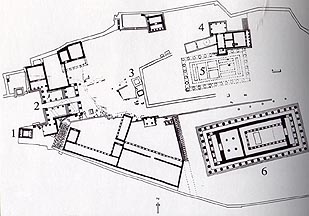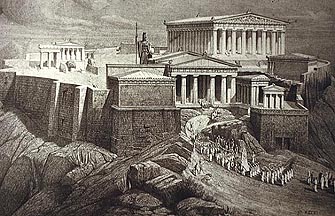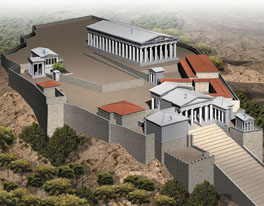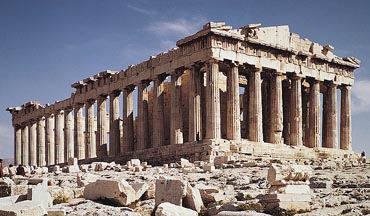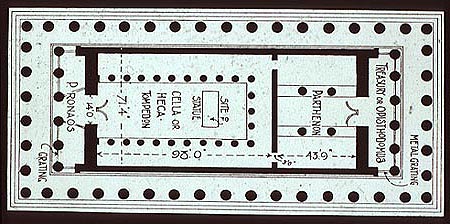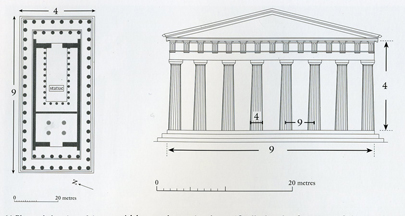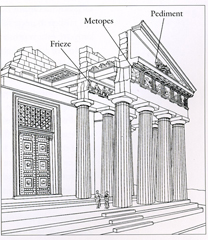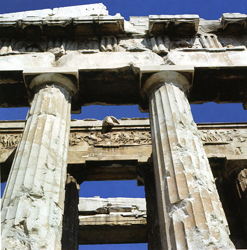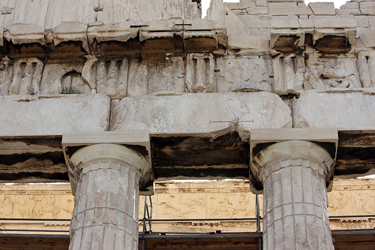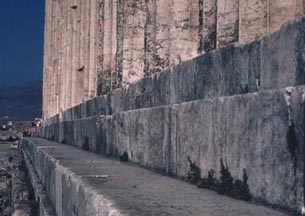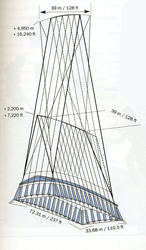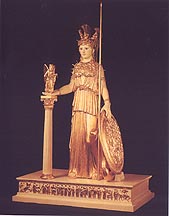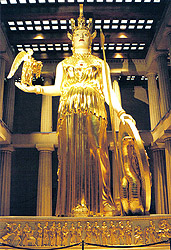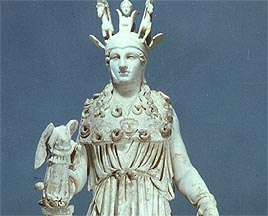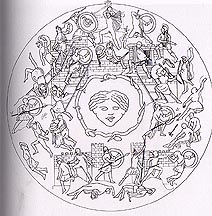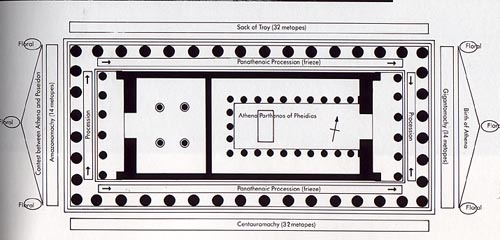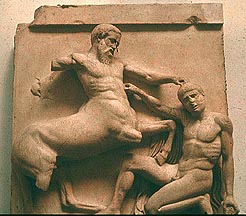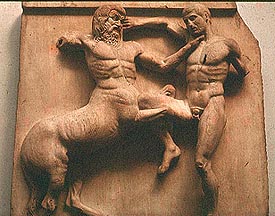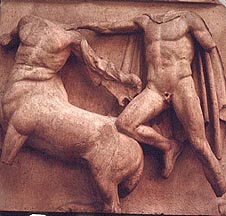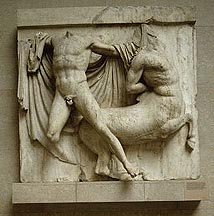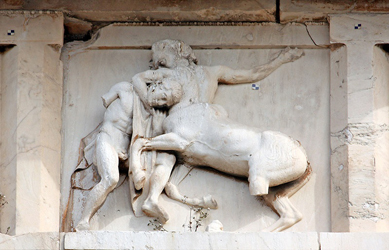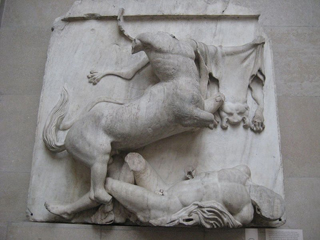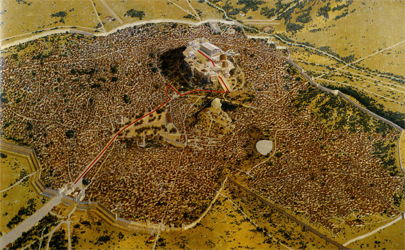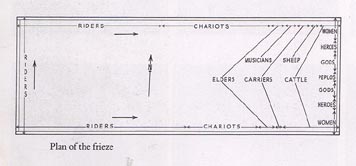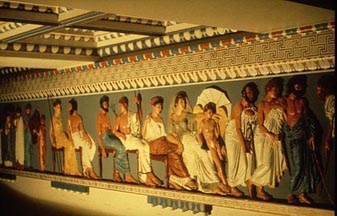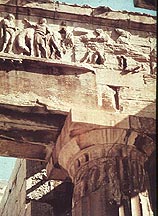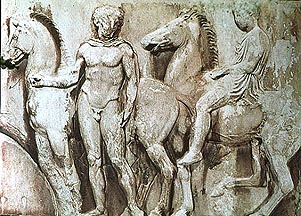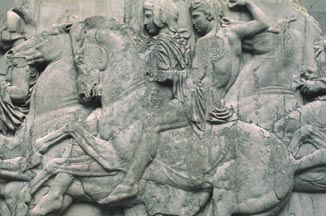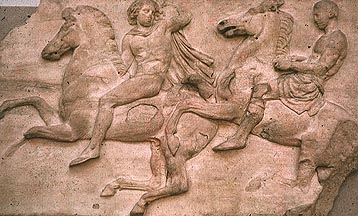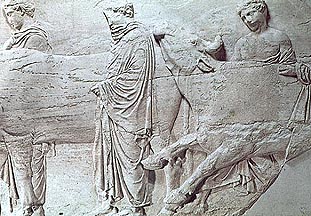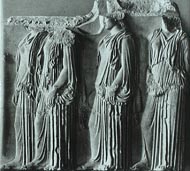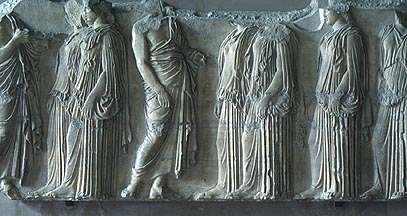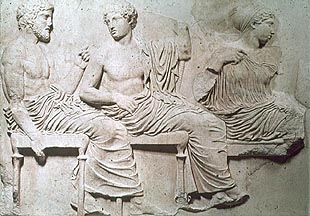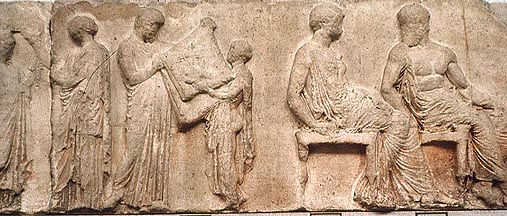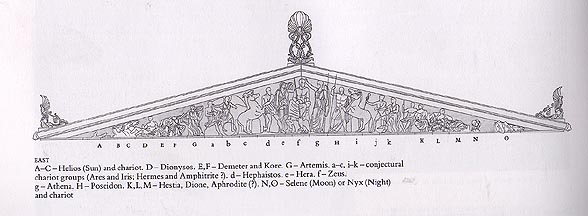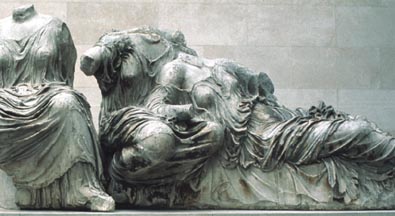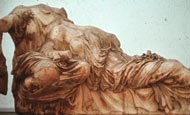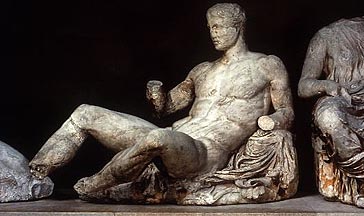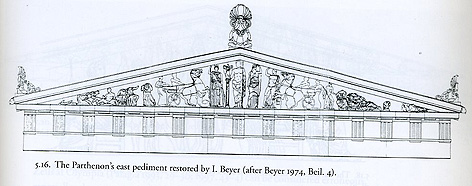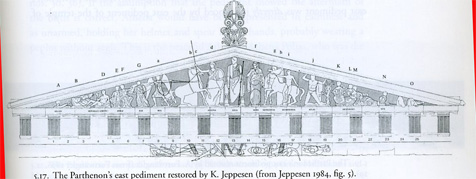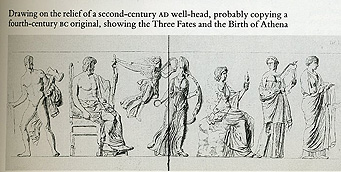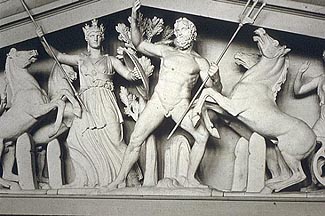ARTH Courses | ARTH 209 Assignments
Parthenon
A Gallery of Images
Copy of portrait of Pericles (c 500-429) as Strategos.
View of the Acropolis (looking from the west)
Plan of the Acropolis c. 480 B.C.
Plan of the Old Temple of Athena, c. 529-520 B.C. -the foundations are visible between the Erechtheum and the Parthenon.
Plan of the Pre-Parthenon, c. 488-480 B.C.- the building was never completed above the lower column drums. Destroyed during the Persian occupation in 480 & 479 B.C.
Plan of the Acropolis: 1) Temple of Athena Nike; 2) Propylaea; 3) Statue of Athena Promachus; 4) Erechtheum; 5) Old Temple of Athena; 6) Parthenon.
Parthenon looking from the west at the west facade. The architects were Iktinos and Kallikrates.
Plan of the Parthenon
Analysis of the proportions of the Parthenon
Cross section of the east end of the Parthenon.
West facade with Doric and Ionic Friezes. Note the presence of regulae and guttae under the Ionic frieze.
Curved Stylobate of the Parthenon.
Analysis of the Refinements
Chryselephantine Statue of Athena Parthenos made by Phidias:
Modern Reconstruction of the Athena Parthenos
Modern reconstruction made by Alan LeQuire and housed at the replica of the Parthenon in Nashville.
The following description of the statue of Athena Parthenos is from the Perseus Project: As restored from copies, Athena probably stood with her weight on her right leg, and her left leg relaxed. She wore sandals, a peplos belted over the overfold, an aegis, and a helmet. A centauromachy was illustrated on the soles (?) of her sandals, and the helmet was decorated with griffins and sphinxes. On the palm of her outstretched (right?) hand she held a statue of Nike, and in the other she held a spear. At her feet rested a shield, within which (?) a serpent (representing Erichthonios) was coiled. The shield was decorated on the outside with an Amazonomachy, and on the inside with gigantomachy. On the statue base was illustrated the birth of Pandora, the progenitor of the race of women. Hephaestus formed her body out of clay while Athena gave her life by dressing and adorning her body. Note how the creation of man was complete in a single stage with Prometheus forming the body out of clay, while woman needed two stages in creation. Consider this in relationship to the contrast between the nude kouroi figures versus the clothed korai figures. The name Pandora means all gifts so she is regularly seen as the giver of the arts.
"Varvakeion Athena" from Athens, 2nd c. AD version of the Parthenos.
Detail of the "Varvakeion Athena."
Reconstruction of the outside of the shield showing the Battle between Greeks and Amazons.
Sculptural Programme of the Parthenon:
Metopes: from the South Side: Battles of Lapiths and Centaurs.
Ionic Frieze: Panathenaic Procession
Route of the Panathenaic Procession
The celebration of the Panathenaea is understood to commemorate the foundation of the civic order which coincides with the birth of Athena, the Gods defeat of the Giants, and the founding of Athens.
Plan of the Ionic Frieze.
Modern Reconstruction of the Ionic Frieze along the east end.
Ionic Frieze at the west end.
Riders preparing to mount.
Riders preparing.
Rider taming rearing horse [Antigone chorus]
Riders
Hydra Bearers.
Sacrificial Animals
Maidens
Maidens
Seated Gods: Poseidon, Apollo, and Artemis.
Donation of the Peplos with Athena and Hephestus to the right.
Pediments:
East
Remains of the east pediment.
J. Carrey's drawing of the east pediment, 1674. Note that these drawings were done before the 1687 explosion of the Parthenon.
East Pediment: Birth of Athena
"Three Fates" from the East Pediment of the Parthenon.
Detail of the "Three Fates". The reclining figure is possible Aphrodite.
Dionysos (?) from the East Pediment
Reconstructions of the East Pediment
J. Six, 1894.
Furtwängler, 1896
A. B. Cook, 1917.
E. Berger, 1959
E. B. Harrison, 1967,
Beyer, 1974.
E. Berger, 1977.
Jeppesen, 1984.
Mostratos, 2004.
Below are the figures generally attributed to the East pediment of the Parthenon. Someone who knows their astronomy can help me out here. I know that when the full moon rises, it is at sunset. Does that mean that the sun always rises on the day of the full moon when the moon sets? I ask this in relationship to the Helios and Selene figures at either end of the pediment. Try to reconstruct their original arrangement:
 |
 |
 |
 |
 |
 |
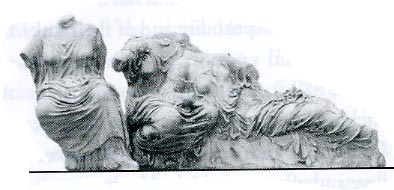 |
 |
|
The second-century well- head this drawing is based was for a long while believed to be based on East Pediment of the Parthenon. You will notice that a number of the reconstructions above assume this. More recently this association has been questioned.
West Pediment:
West Pediment: Contest between Athena and Poseidon
Reconstruction of the Center of the West Pediment
